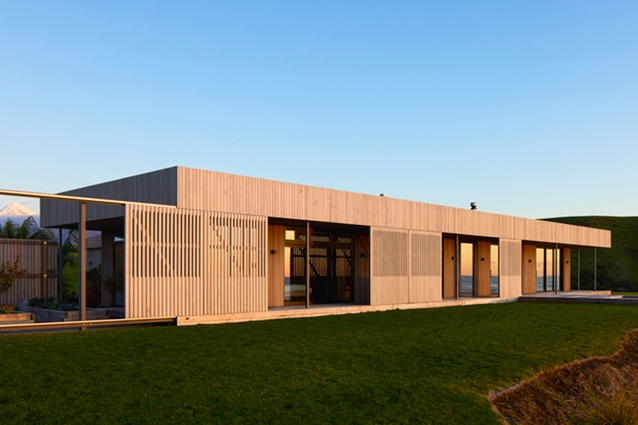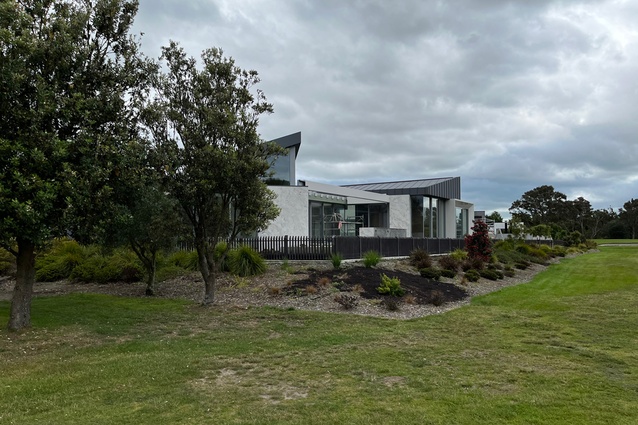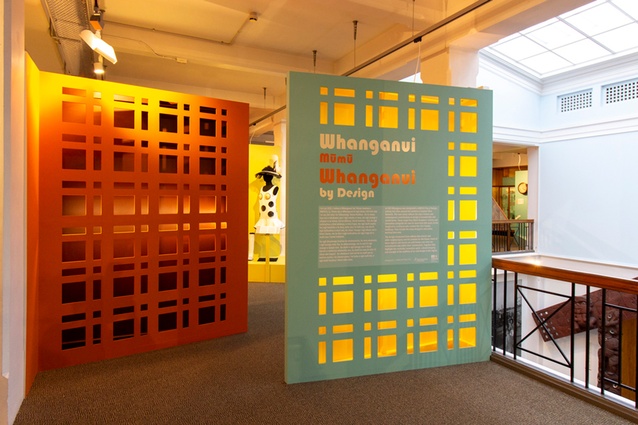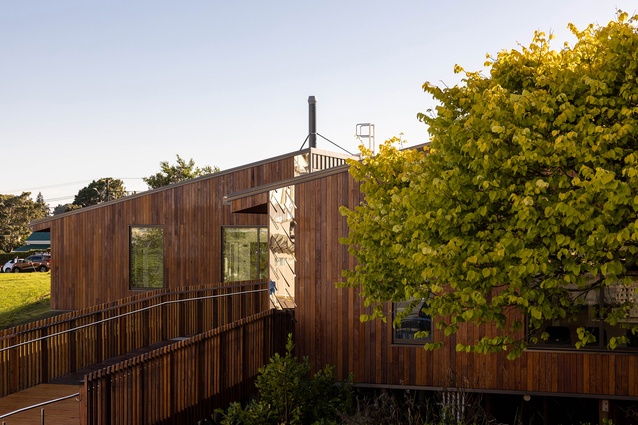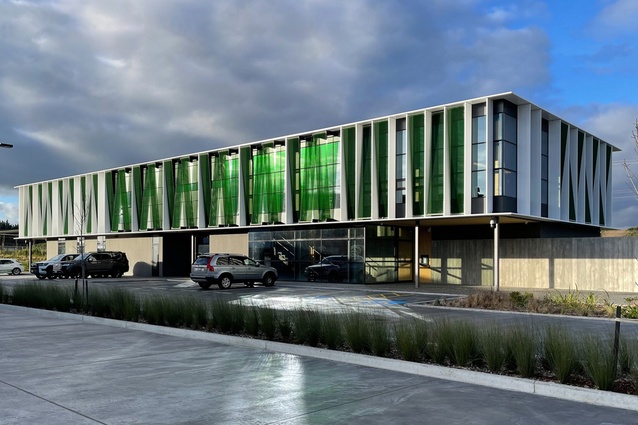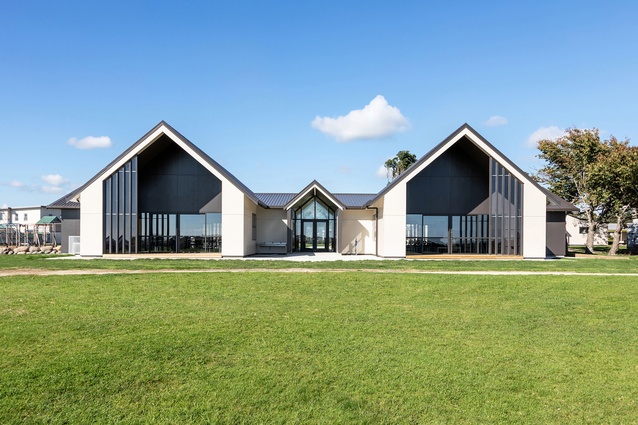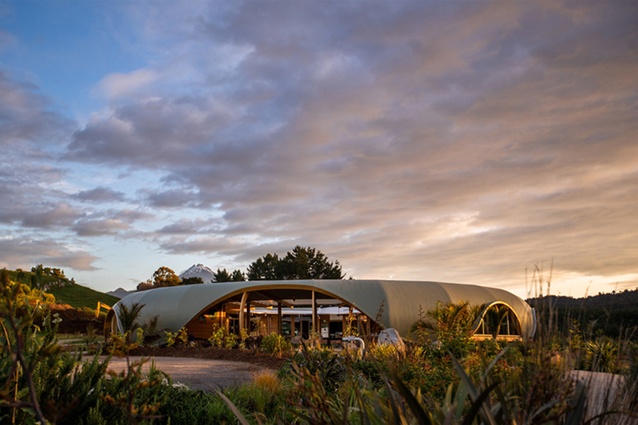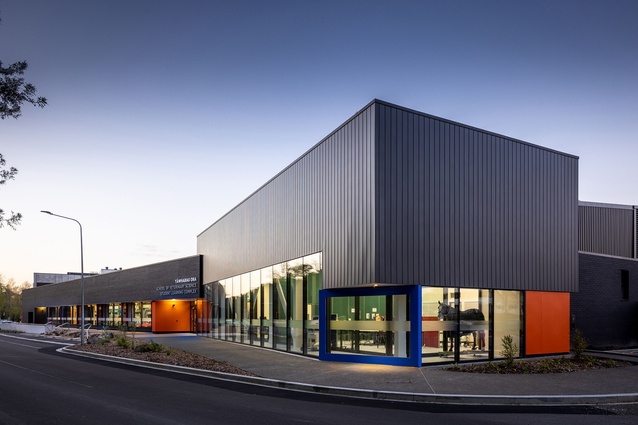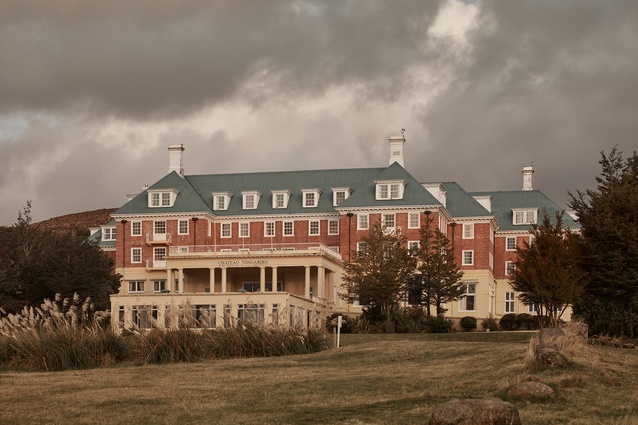Winners: Western Architecture Awards 2023
The winners of the 2023 Western NZIA Local Architecture Awards were announced at an awards ceremony held at TSB Showplace, New Plymouth on Friday 16 June. Nine projects were awarded across six categories encompassing small builds, civic architecture and multi-unit.
The awarded projects were selected from a shortlist of fourteen. The shortlist was compiled by a jury led by Thanh Nguyen (Beca Architects) and rounded out by architects Belinda Tuohy (architecture +), Ian Pritchard (Architect Ian Pritchard), and lay juror Sally McDonald.
The winning projects are:
Housing
Tapuae House by Gibbons Architects
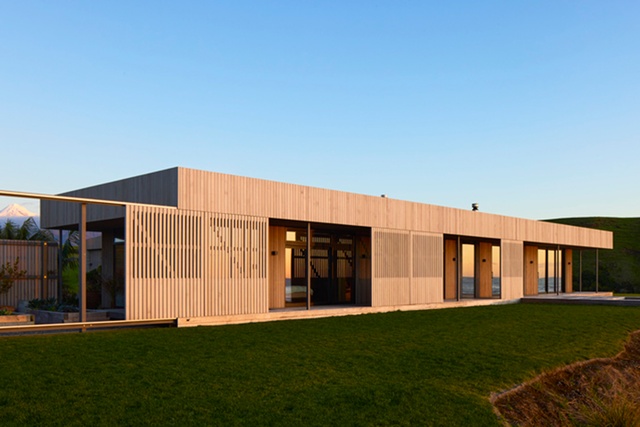
The coastal farmhouse is within a 60-hectare working cattle farm. The building platform was heavily modified by the previous owner and the new home, sitting quietly on the land, successfully ameliorates this.
Planning is direct. The mounga (dormitory) and seaward (living) pavilions form a sheltered central courtyard, complete with a swimming pool. The operable timber brise soleil offers refuge from wind and glare from the Tasman Sea. This delightful building is pragmatic in nature but music for the soul.
Kanuka Drive Home by Hyndman Taylor Architects
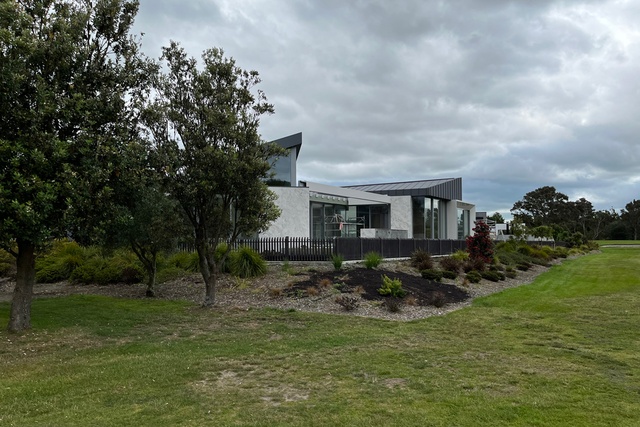
Located on a compact urban site adjoining Manawatū Golf course, this dynamic home is designed around a progression of shifting angles that direct views across the fairway and differentiate internal spaces.
A well-provisioned programme within the envelope allows for extended family and friends to stay. The two living spaces feel connected via the central kitchen, yet maintain their own sense of intimacy and individual character. The ceiling elevation is carefully articulated with tall skylights that create contrasting experiences of enclosure and loftiness. The detailing is meticulous. Large custom-printed porcelain tiles clad the exterior and interior, with crisp mitre joints at angular junctions. Precision of materials makes every view a delight.
Resene Colour Award
This dynamic home sits respectfully alongside the Manawatū Golf course, with the material palette complimenting the fairway and green. Large custom-printed porcelain tiles to both the exterior and interior provide a textural softness that brightens the dark exterior metal cladding and interior timber lining. White kitchen joinery, bathroom vanities and interior doors with generous tubular pull-handles provide a crispness among the natural materials. Colour is carefully introduced through marble tiles in the bathrooms, and sculptural green tiles to the curved wall in the powder room.
Public Architecture
Whanganui Mumu – Whanganui By Design by Dalgleish Architects
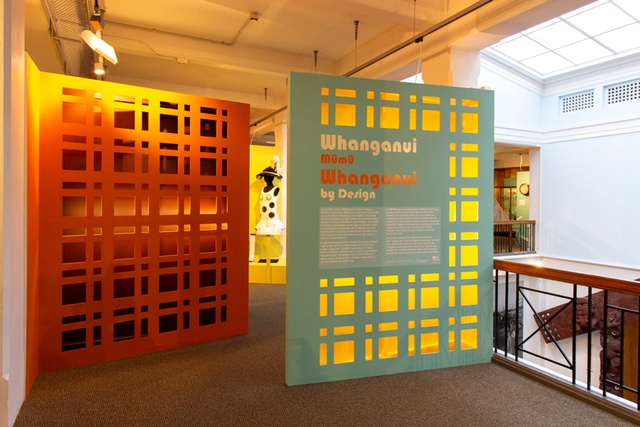
The Whanganui By Design exhibition is located on the mezzanine level of the Whanganui Museum. The L-shaped exhibition space begins with colourful dividers based on a tartan pattern, which encourages visitors to slow down and experience the space. Bold use of colour and pattern create an unexpected and successful backdrop to the displays. A mix of lighting and suspended display pieces within the cases gives breathing space to the colour, while celebrating the objects within.
Resene Colour Award
Colour creates a striking, playful progression through the L-shaped space. This is achieved through the successful layering of tartan-inspired laser-cut panels that not only serve as decorative elements, but also encourage natural flow through the space. Calming yellow in the display cases is paired perfectly with the burnt orange and green panels.
Renal Unit – Taranaki Base Hospital by Warren and Mahoney Architects
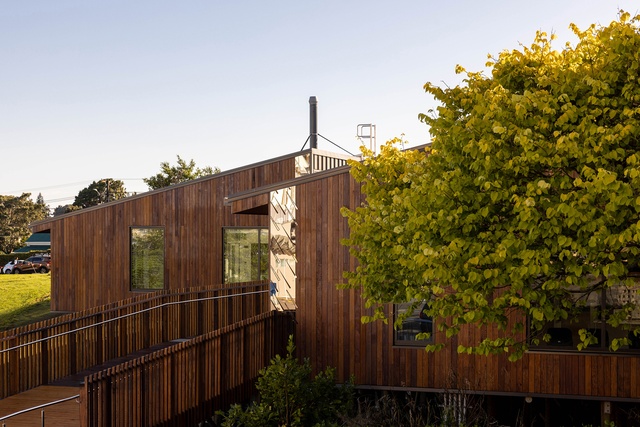
The Renal Unit at Taranaki Base Hospital is a world-leader as a zero-carbon, zero-energy healthcare building, and creates an exemplary environment for dialysis treatment. Spanning a valley planted with native trees, the sustainably sourced timber boardwalk bisects the modest form, creating distinct patient/clinician spaces, together with level access from both the street and hospital.
Set in a residential zone, the building responds appropriately in terms of scale and materiality. In the architect’s own words, the building offers “a sense of hope, relaxation and access to nature”.
Commercial Architecture
Higgins Family Holdings Head Office by Novak+Middleton
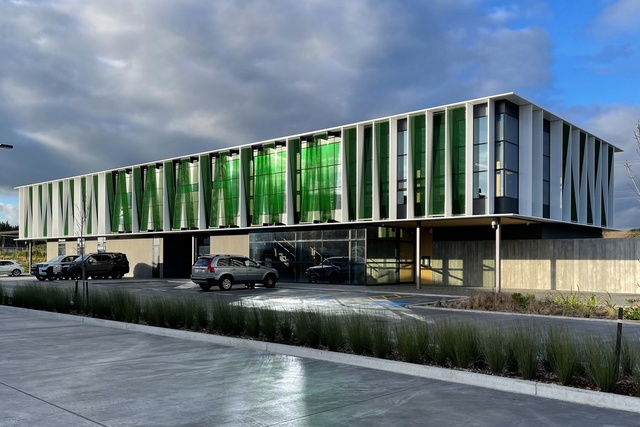
Sitting parallel to the main-trunk railroad, this new office building establishes a dynamic frontage to the industrial zone behind. The design utilises and showcases the positive attributes of concrete, combining it with glulam technology to deliver an energy-efficient structure. The concrete ground floor anchors the building form, providing a robust environment for staff amenities, a truckie’s kitchen and training room. The glulam upper floor provides a lightweight structure that floats above its base, with triangular pop-ups to the roof giving additional elevation. The triangular geometry recurs in the green Kaynemaile screens to the façade, adding a playfulness and moderating the internal environment. The resulting workspace feels protected from the surrounding industrial activities, yet strongly connected to the natural environment.
Education
Puketapu School Roll Growth Classrooms by Ardern Peters Architects
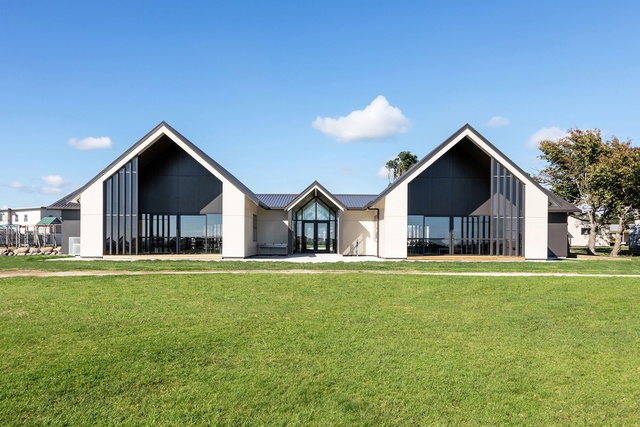
Carefully designed and sited into the existing context, the new classroom building provides a balanced mix of delight and calm that houses a hive of student activity within. The overall layout enables a diverse range of activities to happen concurrently and comfortably in the interconnected flexible spaces. Interior finishes and colour scheme integrate the local cultural narrative, while acknowledging the needs for students to have their own creative contribution. The strong client-and-architect relationship affords broader community outcomes, which is at the heart of Puketapu School.
Green School New Zealand Kina by Boon
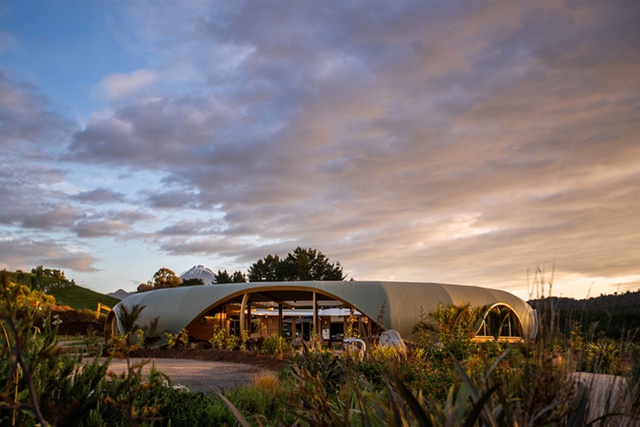
Located on the outskirts of New Plymouth, a large kina, Stage 2 of Green School, is nestled among thousands of native trees at the base of Mt Taranaki looking out to the ocean. The kina form is celebrated with an organic, circular shape to create a safe and nurturing learning environment, with classrooms all opening to a shared central play space.
A timber structure, driven piles, material selection and emphasis on insulation and ventilation systems ensure the building mirrors the environmental values the school is modelled on. The kina patterning features throughout internal spaces, with timber acoustic panelling shaping the circular interior.
Tāwharau Ora – School of Veterinary Sciences by Lab-works Architecture and CCM Architects in association
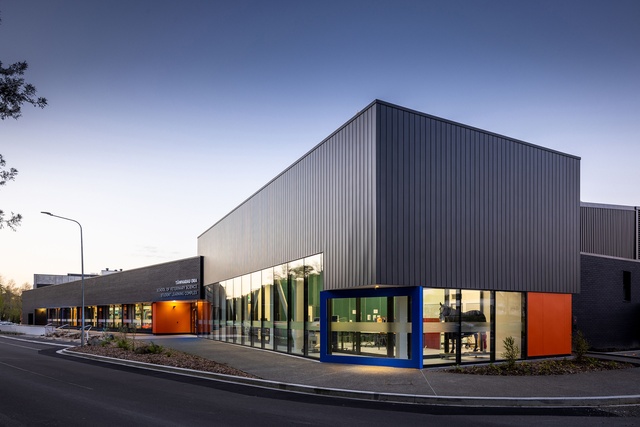
This project provided the opportunity for Massey University to showcase its world- leading veterinary programme to the public and wider campus. The close collaboration between Lab-works Architecture and CCM Architects has delivered a flagship facility for Massey University that exceeds all expectations. The design improved on learning from world-leading facilities to create a new benchmark in solving a complex set of technical requirements, while providing an unexpectedly unique and playful environment for its users. The needs of staff and students, as well as the public and their animals, are respectfully considered and reflected in every aspect of the outcome. Moments of delight are found in this highly technical spatial programme.
Enduring Architecture
Chateau Tongariro Hotel (1929) by Hall & Marchant, Architect Herbert W. Hall
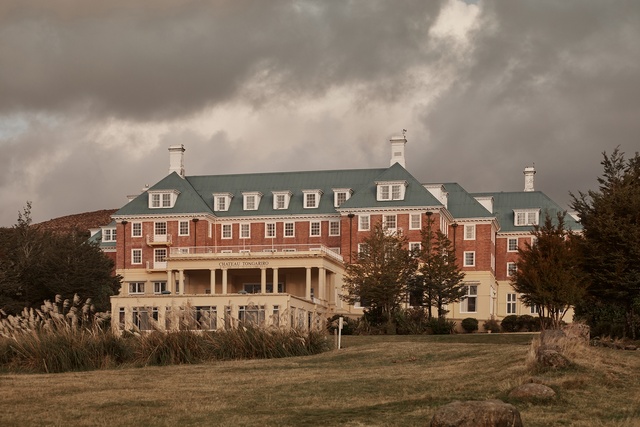
Tongariro is New Zealand’s oldest national park and a dual World Heritage area. This status acknowledges the park’s importance to Māori cultural and spiritual values.
The Chateau Tongariro Hotel embodies a timeless elegance and is rooted deeply in New Zealand’s heritage. Designed by Timaru-based architect Herbert Hall (1881-1939), the neo-Georgian hotel was constructed of reinforced concrete but designed to resemble a traditional Georgian brick building. The hotel was luxuriously appointed, with panoramic windows, hot and cold running water to all rooms, and tasteful furnishings. Its place in Aotearoa New Zealand’s architectural history is more than a building that’s highly recognisable. The Chateau represents architectural excellence in an era when the country was uncertain about its vernacular but aspired to showcase its wonder.
Built by Fletcher Construction, it was officially opened on 13 November 1929.
The NZIA Architecture Awards programme is supported by Resene and APL.

